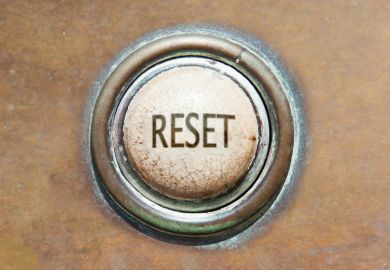At their best, mathematical proofs have “much in common with a good detective story”.
That was the claim put forward by Marcus du Sautoy, the Charles Simonyi professor for the public understanding of science and professor of mathematics at the University of Oxford, in a discussion with Booker prizewinning novelist Ben Okri on “Narrative Wizardry”.
Mathematics, he explained to the audience at Jewish Book Week on 21 February, is far from being “simply a list of all the true statements we can discover about number”. Instead, mathematicians are best seen as “storytellers” – and “the quality of a good proof is one that has many things in common with the act of great storytelling”.
When the 17th-century French mathematician Pierre de Fermat stated but did not prove his celebrated Last Theorem, for example, Professor du Sautoy suggested that he created a new “mathematical peak in the distance”.
This meant that “the challenge for subsequent generations of mathematicians was to find a pathway leading from the familiar territory that mathematicians had already navigated to this foreign new land…At times you arrive at what looks like an impasse and need to take that characteristic lateral step, moving sideways or even backwards to find a way around,” he said. “Sometimes you need to wait for new mathematical characters like imaginary numbers or the calculus to be created so you can continue your journey.”
Professor du Sautoy continued: “A successful proof is like a set of signposts that allow all subsequent mathematicians to make the same journey. Readers of the proof will experience the same exciting realisation as its author that this path allows them to reach the distant peak.”
This “‘aha’ moment we experience when all the strands seem to come together to resolve the mathematical mystery”, Professor du Sautoy went on, can be compared to “the moment of harmonic resolution in a piece of music or the revelation of whodunnit in a murder mystery”.
When “creating a new piece of mathematics”, he went on, “the choices I will make will be motivated by the desire to take my audience on an interesting mathematical journey full of twists and turns and surprises. I want to tease an audience with the challenge of why two seemingly unconnected mathematical characters should have anything to do with each other. And then, as the proof unfolds, there is a gradual realisation or sudden moment of recognition that these two ideas are actually one and the same character.”
Much of the pleasure we derive from this comes from a “desire to have the enigma resolved. In that sense, a mathematical proof shares much in common with a good detective story,” he added.





